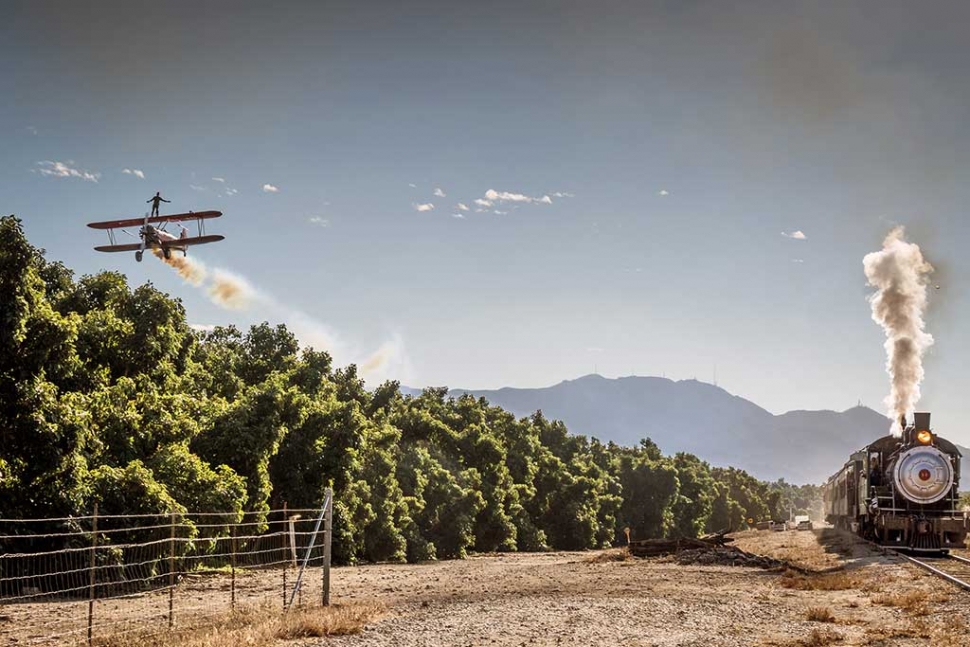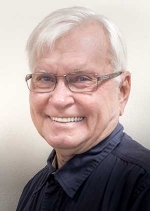|
Photography Know-How
 Photo of the Week "Stearman bi-plane and steam engine... two magnificent machines of a bygone era" by Bob Crum. Photo data: ISO 400, 16-300mm lens @52mm, f/11 & 1/1000 seconds shutter speed. By Bob Crum — Wednesday, November 15th, 2017
Gotta dodge & burn
 Bob Crum In a previous column, I addressed issues involved with shooting the Headless Horseman. But capturing the image was just half of the challenge. There's something else equally important. You've heard me harp ad nausea the importance of composition. But that “something else” I mentioned prompted my friend Wanda at the Gazette to suggest the grist for this column. Outdoor Photography magazine often points to Ansel Adams when attempting to illustrate how to best photograph landscapes. In a 2014 issue: “Be a Modern Ansel Adams" the article lists top tips to create high-drama landscapes. Ansel Adams was an accomplished musician, as well as arguably the greatest landscape photographer. Relating to music, he famously described a film negative as the score and the print as the performance. Key word: Print! The article states: “In Adams' best-known photographs of the American landscape, one can't escape the sense of high drama he conveyed. He loved the great scenic vistas and tried to convey the emotion he felt in his photographs. No photograph could match the scene itself, but Adams worked hard to distill these places into two-dimensional (black & white) photographs.” The article explores several compositional devices and technical tips for adding drama to landscape photographs. These techniques, the article explains, won't magically transform you into the reincarnation of Adams, but we'll give you some things to consider when trying to capture the essence of a grand scenic vista and translate it into a photograph. The article totally overlooks the very important work that has to be done after the shutter button is pressed. Ansel Adams would not have ever achieved acclaim were it not for his masterful work in the “dark room”... the equivalent to present day digital post processing. Given the rudimentary photographic gear of the day, there was only so much the camera could accomplish. Inherent problems led Adams, with Fred Archer, to devise a photographic technique - the Zone system - for determining optimal film exposure and development. A topic for another day. Because good light is important for capturing photos, Adams was known to spend days in the wilderness. Back home, his 'magic' was performed in the darkroom. Once in the darkroom, he worked tirelessly creating prints. Dodging and burning are darkroom techniques used to bring in shadow details and calm the highlights. Adams mastered the techniques to an art form. Nevertheless, it was not unusual for Adams to spend hours and waste several sheets of photographic paper before the “perfect” print was made. You see, besides being an accomplished photographer, Adams was a master printer. His prints made him famous! Although digital photography eliminates the smelly chemicals, the work is similar. But instead of pouring chemicals, I pour a glass of Merlot and perform photo post processing and editing on a computer with powerful software programs. Adobe's Lightroom has ably replaced the darkroom. I forgo jpegs and instead capture in RAW mode. Bland images straight out of the camera, they beg to be creatively massaged. Point being: Good photos are made, not taken by simply pressing the shutter button. This week's photo was an 'extra' event of last weekend's S.T.E.A.M. festival. Rare is the opportunity to capture two great machines of yesteryear - a Stearman bi-plane (with a wing walker) and a steam engine - in one photo! Hooya! The major issue was timing due to the plane obviously flying faster than the lollygagging steam engine. The plane almost flew out of the frame while I waited for a blast of steam from the Baldwin locomotive. Ahhh... the exhilaration of photographic challenges! Send comments, suggestions or questions to bob@fillmoregazette.com |
